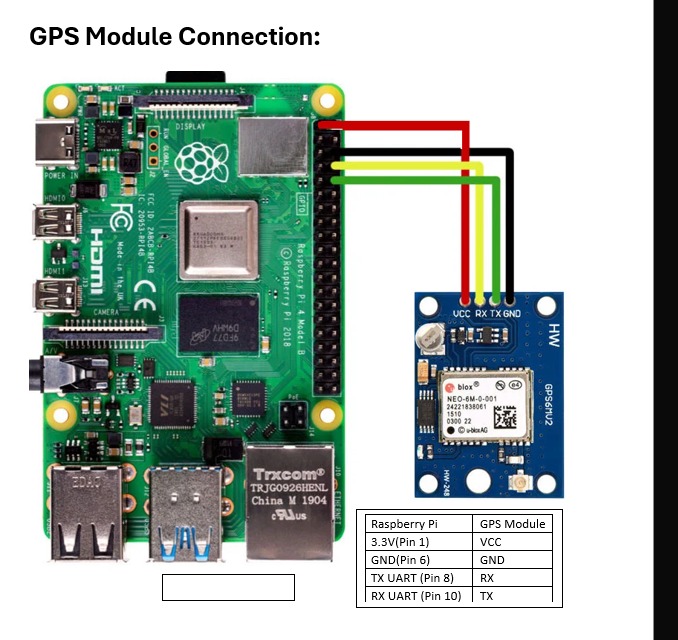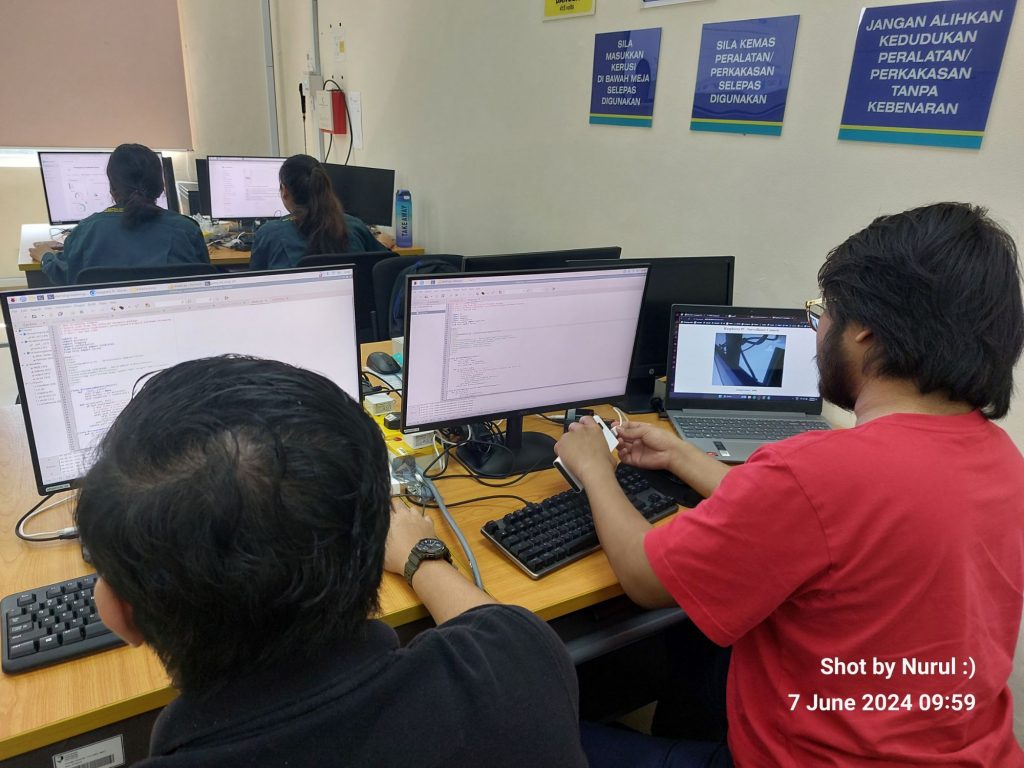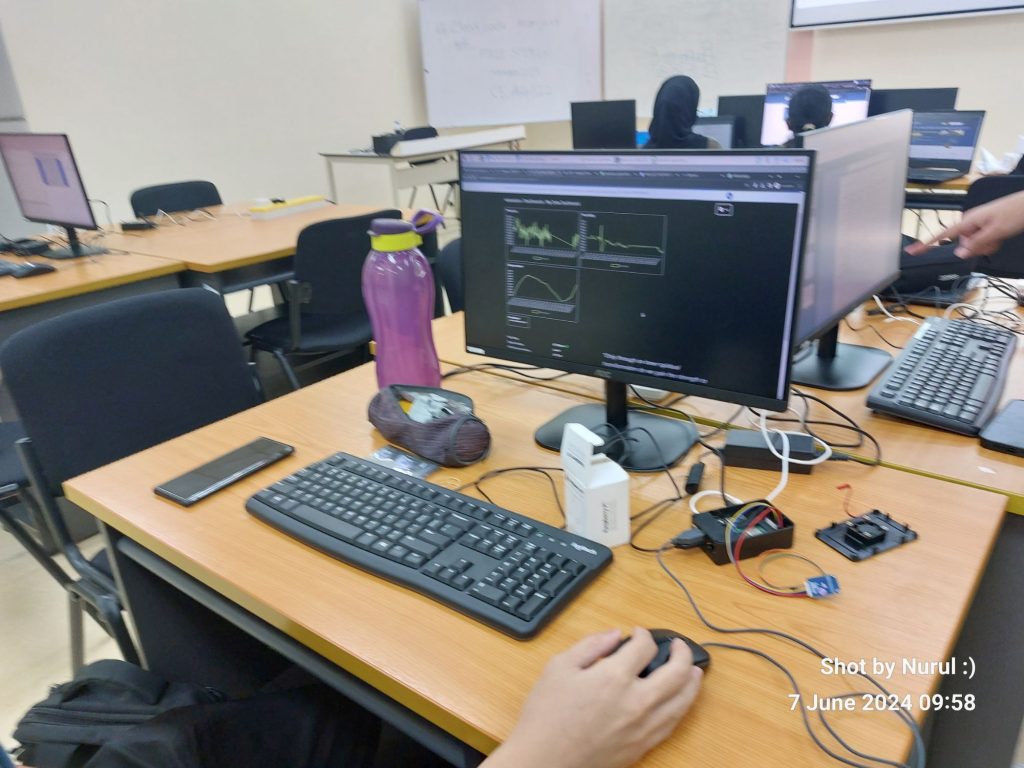Today’s BTE 1522 class was an exciting dive into the world of GPS technology and its integration with Raspberry Pi. We explored the essential concepts, from importing relevant Python modules for GPS functionality to circuit construction and function coding. This session is a crucial part of our project development series, providing students with hands-on experience in incorporating GPS modules into their Raspberry Pi projects.
Understanding GPS and Its Importance
Global Positioning System (GPS) is a satellite-based navigation system that provides geolocation and time information to a GPS receiver anywhere on or near the Earth. Integrating GPS into Raspberry Pi projects opens up numerous possibilities, such as tracking, navigation, and location-based services, which are pivotal in various applications like autonomous vehicles, drones, and IoT devices.
Circuit Construction for GPS Integration
Components Needed:
- Raspberry Pi
- GPS Module (e.g., NEO-6M)
- Connecting Wires
- Breadboard (optional)
Steps:
-
Connecting the GPS Module:
- UART Communication: Connect the GPS module’s TX (transmit) pin to the Raspberry Pi’s RX (receive) pin and the GPS module’s RX pin to the Raspberry Pi’s TX pin. Additionally, connect the VCC pin to the 3.3V or 5V power supply (depending on your GPS module specifications) and the GND pin to the ground.
- I2C Communication: If your GPS module supports I2C, connect the SDA (data) and SCL (clock) pins of the GPS module to the corresponding pins on the Raspberry Pi. Ensure the VCC and GND pins are also properly connected.
-
Powering Up: Power on the Raspberry Pi and ensure all connections are secure.

Coding for GPS Integration
Python Modules:
gpsd: A popular library for interfacing with GPS modules.serial: A library for handling serial communication.
UART Communication:
-
Installing Libraries:
sudo apt-get install gpsd gpsd-clients python-gps -
Python Code Example:
pythonimport gpsd # Connect to the local gpsdgpsd.connect() # Get GPS datadef get_gps_data():packet = gpsd.get_current()latitude = packet.latlongitude = packet.lontime = packet.time return latitude, longitude, time # Print GPS data lat, lon,timestamp = get_gps_data() print(f"Latitude: {lat}, Longitude: {lon}, Time: {timestamp}")
I2C Communication:
-
Enabling I2C:
sudo raspi-configNavigate to ‘Interfacing Options’ and enable I2C.
-
Python Code Example:
pythonimport smbus2 import time bus = smbus2.SMBus(1) address = 0x42 # Replace with your GPS module's I2C addressdef read_gps(): data = bus.read_i2c_block_data(address, 0, 16) return data while True:gps_data = read_gps()print(gps_data) time.sleep(1)
Communication Protocols
UART (Universal Asynchronous Receiver-Transmitter):
- Pros: Simple to use, widely supported.
- Cons: Limited to point-to-point communication.
I2C (Inter-Integrated Circuit):
- Pros: Supports multiple devices on the same bus, more flexible.
- Cons: More complex than UART, requires addressing.
Key Learning Outcomes
- Circuit Construction: Students learned how to set up a GPS module with Raspberry Pi, ensuring correct connections for power, ground, and communication lines.
- Coding Techniques: We explored Python coding for both UART and I2C communication protocols, highlighting the differences and use cases for each.
- Real-Time Data Acquisition: Students gained practical skills in capturing and processing GPS data, which can be applied to various projects requiring geolocation capabilities.
Integrating GPS functionality into Raspberry Pi projects offers a robust foundation for creating advanced IoT applications and location-based services. Today’s class provided a comprehensive understanding of the hardware setup and coding techniques necessary to harness GPS data effectively. As we move forward, these skills will be crucial for the final project development phase, enabling students to implement sophisticated and innovative solutions.



